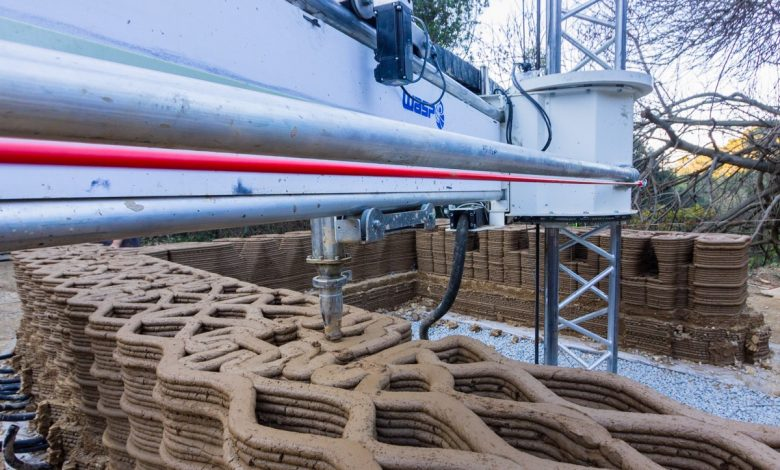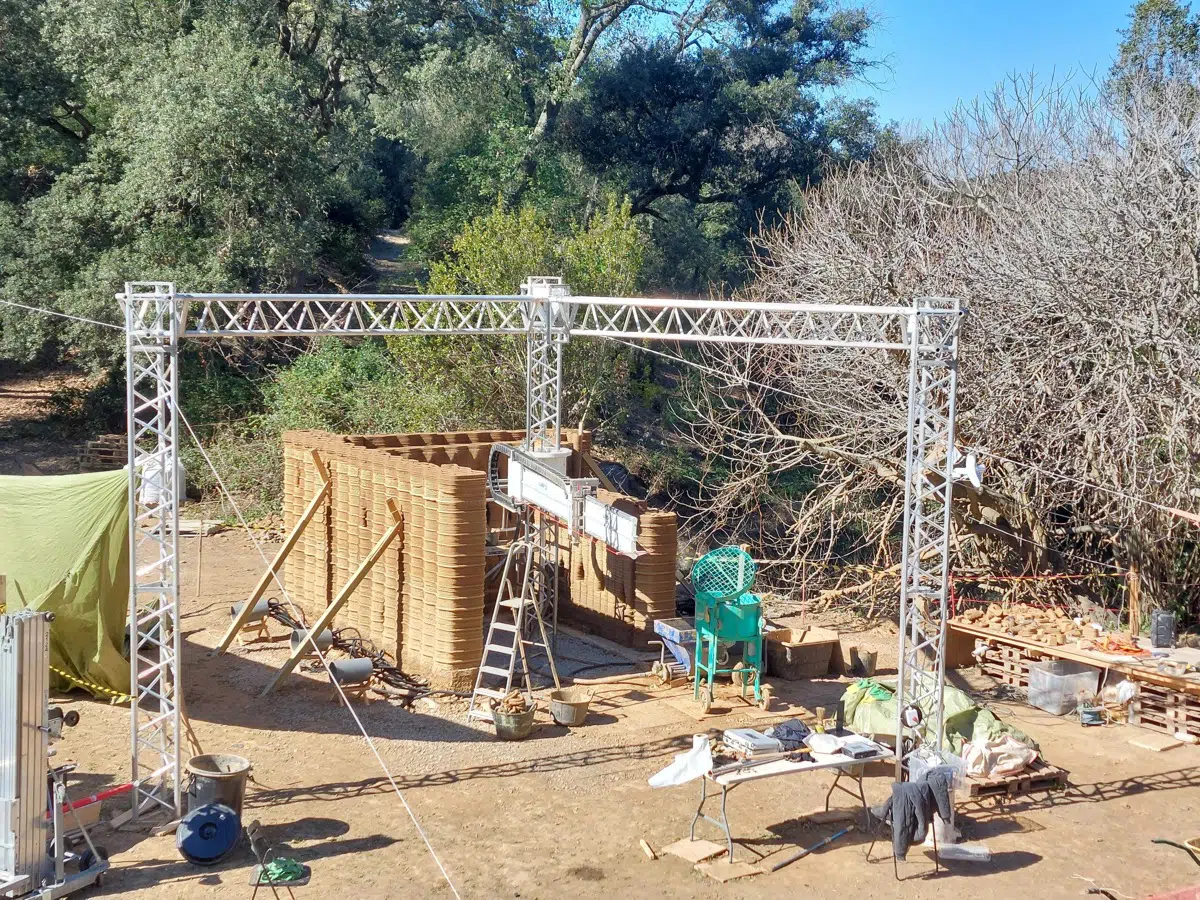
IAAC, the Institute for Advanced Architecture, continues its research towards 3D printing architecture with local earthen materials by completing a housing prototype in the natural park of Collseolla, in the outskirts of Barcelona, this winter. The result is a small constructed prototype with 100% natural and locally sourced material recipes that will be inaugurated with a live event on February 28th [register here].
The final prototype will be the first 3D printed earthen construction in Spain, spanning construction of 7 weeks exclusively with materials from a 50-meter radius. The building will be inaugurated on February 28th, 2022. It is composed of a stone foundation, 3D printed earth walls, a timber roof structure and wooden carpentry. The prototype is printed using 3D WASP’s modular crane.

The building design is based on a precise analysis of the climate condition of the Mediterranean, the volume is compact to protect from the cold in winter, yet expandable for the other three seasons, enabling the use of the immediate exterior surroundings.
The wall section is composed of hearth surfaces and a network of cavities that either contain air or insulation. The design of its section was calculated to prevent heat loss in the winter while protecting from solar radiation in the summer. The design is researched and tested via digital and physical simulations in an effort to reduce construction footprints, monitor the reduction of CO2, and consider the full cycle of the material life.

3DPA is a six-month postgraduate research program at IAAC, that explores this new building technology and trains young architects and scholars for the future of construction and 3D printing possibilities, spanning from September to March each year. The program is axed around the development and implementation of solutions on a 1:1 scale, aiming to demonstrate the feasibility of this promising innovative technique, the implications and the potential applications to the project and future developments of it.

Leave A Comment